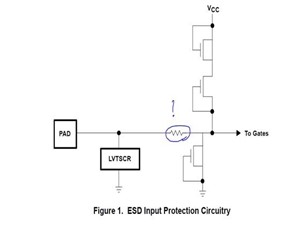Hello team,
In a redesign a HC logic needs to be replaced by AHC logic.
Namely, the SN74HC08D has to be replaced by SN74AHC08D.
For this, I have the following concerns:
- Are all advanced high-speed CMOS devices using the same ESD input protective circuits (incl. the current limit resistor, please see the attached figure)?
- The figure is from: https://www.ti.com/lit/an/scaa034c/scaa034c.pdf
- The figure is from: https://www.ti.com/lit/an/scaa034c/scaa034c.pdf
- Are there any technical risks we should take into account (e.g. EMI) ?
- Is there anything else where you should be aware of in such a redesign?

Thank you.
Kind regards,
Wouter Kragt

